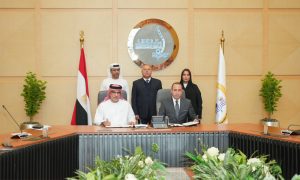$2trn Islamic Finance market by 2015
Developers in the region eyeing Islamic Finance as a viable alternative source of funding for construction projects

The global Islamic finance market is set to double in size between 2011 and 2015 as the sector is increasingly viewed as a viable alternative to conventional finance, a Standard & Poor report has found.
Stuart Anderson, managing director and regional head, Middle East at Standard & Poor, said that S&P expected the $1 trillion global Islamic Finance industry to grow 20% over the four year period, doubling in size to $2 trillion.
“The global crisis faced by conventional finance has led to Islamic Finance increasingly being viewed as a credible alternative. Issuers and investors have realised that the risk-reward balance in both conventional and Islamic finance are not fundamentally different,” Anderson explained.
A consequence of this shift in attitudes to Islamic Finance is that developers are starting to use it as an alternative source of funding for their construction projects, said Paul McVeity, an Islamic Finance expert at the international legal firm, DLA Piper.
“I think there are three main reasons why project sponsors have been looking at Islamic markets as an alternative source of funding. Quite often, in a multi-source context, you have the commercial banks, conventional financing there, the export agency financing there, a multi-source packaging for all these projects,” he explained.
“But take a step back and look at it from an Islamic Finance perspective, there are three driving factors (that encourage developers to look at it)”.
“First and foremost, it’s an additional source of liquidity. With the continuing crisis of the Eurozone, of course you have fewer European banks looking at the regional project finance market. The result is that there has been a switch in focus towards looking inwards for as diverse a pool of funding as possible.”
The second reason, he said, was to do with the location of the market. Due to the presence of Saudi Arabia, a number of corporate firms tend to operate on a wholly Sharia basis, or at the least, prefer to obtain Islamic Finance over traditional corporate funding.
“Thirdly, when you consider jurisdictions such as Saudi Arabia, there has been a lot of conventional financing taking place. But a large part of that has been done on the basis of the SAMA committee’s understanding of conventional financing techniques and their willingness towards interest,” he said.
“Whereas with Islamic Finance, the Islamic committee uses a very different basis, in terms of it being asset based. The returns are generated through rental profits, and what you find is that there is a perception, certainly in the Saudi market, that were a financing structure be adjudicated upon before the local courts, Islamic Financing would be on a far better footing than conventional finance,” McVeity explained further.
Anderson added that the last few years had seen the Islamic Finance industry take major strides to achieve a broader consensus on Islamic banking structures.
“We have also been seeing stronger and more active support from domestic authorities, particularly through the creation of regulatory and tax frameworks, ensuring a level playing field between conventional and Islamic instruments,” he said.
McVeity added that the market had undoubtedly seen an increase in the quality and standard of legal documentation over the last 10 to 15 years, with project financing documentation following a very international approach.
This falls in with the increasing attractiveness of sukuk among global investors, which is expected to further drive globalisation and expansion of Islamic banking outside Asia and the GCC.
Related Stories: TAV Consortium close to securing $1.1bn Sharia financing deal | GCC developers go local for project financing | Al Futtaim launches financial services division

























